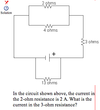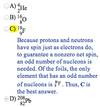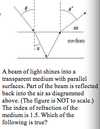Picture/Symbol Cards Flashcards
Describe the resolution of vectors
- Formula for resolving vectors
- Two formulas for reconstructing resolved vectors

Identify the two important trigonometric identities that link sine and cosine

What is the pythagorean theorem?
r2 = x2 + y2
This only works on right angle triangles
It is important to memorize certain common values of trigonometric functions. List the sinθ, cosθ and tanθ values for the following angles (θ):
0°
30°
45°
60°
90°
180°

Recall the graph representing instantaneous velocity

What is the formula used to determine average acceleration between two points in time?
Where v’ is final velocity and v is initial velocity.

What is a uniformly accelerated motion and how can you measure total displacement of it?
Of the magnitude of forces acting on an object are constant, the magnitude of acceleration will be constant (resulting in unformly accelerated motion). The initial displacement, velocity and acceleration at any given time contribute to the overall displacement of the system.
displacement: x = x0- xf (due to initial displacement)
x = v0t (displacement due to inital velocity at t)
x = ½at2(displacement due to acceleration at t)
Total displacement: x = x0+ v0t + ½at2
The translational motion is the motion of the centre of gravity of a system (ie object) through space, illustrated by the above equation
List the three most important equations of kinematics (objects in motion with respect to space and time).
These must be memorized!
x = x0 + v0t + ½at2
v = vo+ at
v2 = vo2 + 2ax
What is the law of gravitation? Provide the formula expressing this
The law of gravitation states that there is a force of attraction existing between any two bodies of masses m1 and m2, the force is proportional to the product of the masses and inversely proportional to the square of the distances between them.
F = KG(m1m2)/(r2)
r: distance between the bodies, KG is the universal constant of gravitation (value depends on units)
What is the equation for uniformly gravitationally accelerated motion?
Average velocity of free fall?
x = xo + vot + ½gt2
v = gt
How is the vertical component of a projectile motion calculated for:
initial speed
displacement at time t
Speed at any time t
Initial speed: Voy = Vosinα
displacement at t: y = Voy + ½gt2
speed at t: Vy = Voy + gt
How is the horizontal component of a projectile motion calculated for:
intiial speed?
displacement at any time t?
speed at any time t?
initial speed: Vox = Vocosα
displacement at t: x = voxt
speed at time t: Vx = Vox (speed is constant due to negligable air friction)
After calculation (or presentation) of the vertical and horizontal components of a projectile motion, how do you calculate:
magnitude of inital velocity?
Direction of motion?

How can you calculate the horizontal distance from the origin of a projectile motion?

Give the formula for the maximal frictional force
fmax = μN
Where μ is the coefficient of friction and N is the normal force to the surface on which the object rests (always perpendicular to surface).
What is static friction and what is the formula which allows the coefficient of static friction (μs) to be calculated?
What is the coefficient of kinetic friction (μk)?
μs = tanα
where α is the angle at which the object first begins to move on an inclined plane as the angle is increased from 0 degrees to α degrees.
μk <μs
μkexists when surfaces are always in motion.
Display the forces and motions acting on/resulting from an object on a sloped surface. Contrast this to an object on a level surface.

Describe uniform circular motion and the formulas that can calculate acceleration and force.
(This applies to things like balls on strings, cars banking on turns and wall of an amusement park rotor)
Magnitude of velocity is constant, but direction is constantly changing (and therefore the velocity vector is continuously changing).
- The velocity is always tangent to the circle, creating an acceleration directed radially inward, called the centripetal acceleration ac
ac = v2/r (where r is radius of circle)
Centripetal force (Fc) = mac = mv2/r

Give the formulas for:
circumference of a circle
area of a circle
circumference of a circle: 2πr
area of a circle: πr2
For pully systems, give the formulas for:
acceleration of the objects (a)
tension on the string (T)
Note: T is always between the weight of mass m1 and m2

What are two kinds of collisions that objects can have?
Give a formula for calculating the motion before and after a collision
- Elastic (objets rebound off each other, conservation of kinetic energy and momentum)
- Inelastic (Objects stick together, there is conservation of momentum, but not kinetic energy, which is lost as heat or sound)
m1v1i + m2v2i = m1v1f + m2v2f
If directions are not the same, then the each momentum must be resolved into x and y components as necessary.
What is kinetic energy? How can it be calculated?
Kinetic energy (Ek) is the energy of motion which can produce work. It is proportional to the mass of the object and its velocity
Ek = ½(mv2)
What is potential energy? How is it calculated?
Potential energy (Ep) is accumulated by the system that contained it. It varies with the configuration of the system (ie distances varying = interactions between particles vary).
The variation of the potential energy is equal to the work performed by the interior forces caused by the interaction between the particles of the system.
Give formulas for the following examples of potential energy (Ep)
- Electric potential
- Universal attraction Ep
- Gravitational force Ep
- Elastic force Ep
Electrical potential: Ep = kq1q2/r
(q = point charge, r = distance between each)
**Universal attraction: **Ep = Gm1m2/r
**Gravitational force: **Ep = mgh
(h = height)
**Elastic force: **Ep = kx2/2
(k = spring constant, x = displacement)
What is the definition of mechanical energy? Give the formula and the theorem of mechanical energy.
The mechanical energy (ET) of a system is equal to the sum of its kinetic energy and its potential energy
ET = Ek + Ep
Theorem of mechanical energy
The variation of teh mechanical energy of a system is equal to the work of exterior forces acting on the system. Consequentialy, an isolated system keeps a constant mechanical energy. The kinetic energy and teh potential energy may vary separately, but their sum remains constant. This makes conservation of energy a very simple way to solve many different types of physics problems.
Why is friction not a conservative force? Give a couple examples of such a force.
It disobeys all three rules of a conservative force
1. After a round trip, the kinetic energy of a particle on which a force acts, must return to its initial value.
2. After a round trip, the work done on a particle by a force must be zero
3. The work done by the force on a particle depends on the initial and final positions of the particle and not on the path taken
- The force, Fs = -kx (Hooke’s law) of an ideal spring on a frictionless surface is a conservative force.
- Gravity is a conservative foce. If you throw a ball vertically upward, it will return with the same kinetic energy it had when it left your hand (neglecting air resistance).
Give the formula for change in pressure with varying depth below the surface
ΔP = pgΔh
where h = depth below surface
p = density
Give the formula for buoyant force (Fb). What predicts if an object will float?
Fb= Vph = mg
Where p = density of the displaced fluid
An object will float if it displaces at most its own weight
Give the formula for the rate (R) of streamline flow for a fluid in motion.
Give the continuity equation
R = (volume past a point)/time = Avt/t = Av
Where volume equals Av (cross sectional area x length) = (A)(vt) = Avt
Length = distance = velocity x time = vt
Cross section of tube can be calculated by: area of circle (πr^2)
Continuity equation for incompressible fluid:
A1V1 = A2V2 = constant
Continuity equation for compressible fluid:
p1A1V1 = p2A2V2 = constant
Give Bernoulli’s equation for the motion of fluid and commonly encountered consequences of the equation
P + pgh + ½pv2 = constant
it follows: P1 + pgh1 + ½pv12 = P2 + pgh2 + ½pv22
Where subscripts 1 and 2 indicate different points in the flow.
A commonly encountered consequence of Bernoulli’s equation is that where the height is relatively constant and the velocity of a fluid is high, the pressure is low and vice-versa
Show a schema for shear modulus (S) on a solid object

What happens when objects gain or lost heat?
Undergo expansion or contraction (linearly or by area or volume)

What is a transverse wave?
A wave where the direction of vibrations is perpendicular to the direction of propagation of the wave (eg. light or oscillating string under tension).

What is a longitudinal wave?
A wave where the direction of vibration is in the same direction as teh propagation of the wave (eg. sound)
Longitudinal waves are characterized by condensations (regions of crowiding of particles) and rarefactions (regions where particles are far apart) along the wave, in the medium.

Recount schematics of maximally constructive and destructive wave interferences.

Recount Thomas Young’s double slit experiment and what it revealed about wave interference.
Particle/wave duality was demonstrated with photons filtering through slits in screens. A light and dark banding pattern was observed on a screen due to constructive/destructive wave interference

What are nodes in periodic/wave motion?
Nodes are points where there is no particle displacement, which are similar to points of maximal destructive interference.
Nodes occur at fixed end points (points that cannot vibrate)
Antinodes are points that undergo maximal displacement and are similar to points of maximal constructive interference. Antinodes occur at open or free end point.

What is Hooke’s law in periodic motion? How can work be determined with this law?
- Particles that are undergoing displacement when a wave passes through a medium undergo motion called simple harmoni cmotion (SHM) and are acted upon by a force described by Hooke’s law.
Simple harmonic motion is causesd by an inconstant force (called a restoring force) and as a result has an inconstant acceleration. The force is proportional to the displacement (distance from the quilibrium point) but opposite in direction.
Hooke’s law: F = -kx
Where k = spring constat, x = displacement from equilibrium
Work (W) can be determined by W = ½kx2
Recall a visual representaiton of Hooke’s law with an object exhibiting simple harmonic motion.
F: force, k: spring constant, x: displacement

Give 6 important features of Hooke’s law for simple harmonic motion
- Force and acceleration are always in the same direction
- Force and acceleration are always in the opposite direction of teh displacement (accounting for the (-) sign in the equation for force)
- Force and acceleration have their maximal value at +A and -A, they are zero at the equilibrium point
- Velcity direction has no constant relation to displacement and acceleration
- Velocity is maximum at equilibrium and zero at A and -A
- The period (T) can be calculated from the mass (m) of an oscillating particle with T = 2π(m/k)½
where k is the spring constant, the frequency f is simply 1/T
How can the period (T) of a periodic motion be calculated with the mass of the oscillating particle?
k: spring constant

Give the equation for the intensity of sound
I = f2A2
f: frequency
A = Amplitude
How do you calculate the decibels of a sound? How do calculate the change in sound level or volume (ΔV)
dB = 10log10(I/I0)
dB: sound level
I = the intensity at a given level (f2A2)
I0: the threshold intensity
ΔV= 10log(Inew/Iold)
































